Cisco Systems is one of the important vendors in information technology and network field. Many network engineers work with Cisco devices during their career and almost all network engineers dream to work in Cisco Systems. Cisco Systems is the industry leader in computer networking field. So, this desire is right. But to start as a network engineer in a company and use Cisco devices or to start working in Cisco, firstly you should pass Cisco Technical Job Interview and Cisco Interview Questions. In this post, we will give you the most important technical questions of Cisco Job Interviews for entry level and for Junior Network engineer candidates. These quesions are also important for entry level certificaitons like Cisco CCNA, Nokia NRS I, Huawei HCIA, Juniper JNCIA. IIf you are ready, let’s start!
To practice more on Entry Level Networking Quesions You Can Check These: CCNA Quizes & CCNA FlashCard Quesions
Table of Contents
Cisco Network Interview Questions For Entry Level Network Engineers
How Many Layers are there in OSI Reference Model?
This question is maybe the most asked question in an entry level network engineering interview. Here, you can answer this question briefly by with the definition of OSI model and the name of the OSI layers. Here is a good answer:
OSI Reference Model is a conceptual model that shows network communication with logical layers. There are 7 layers in OSI Reference Model. These are: Psychical, Data-Link, Network, Transport, Session, Presentation and Application Layers.
After this question, it is probably that they will ask a question about one or two of these layer details. For example, they can ask, about the role of the layers.
What is the role of Psychical Layer in OSI model? (Answer: The transmission of bits, psychical connection, cabling)
Or they can ask, about the devices that work specifically in a layer.
Which devices works in the Network Layer of OSI reference model? (Answer: Routers)
Another question can be about the lower and the upper layer of OSI model.
What is the Lower and Upper layers of OSI model? (First four layers, Psychical, Data-Link, Network, Transport are lower layers of OSI model while Session, Presentation and Application layers are upper layers.)
How Many Layers are there in TCP/IP Model?
This is also a most asked question in network engineering technical interviews. You can answer this question with the definition of TCP/IP model and then you can tell the TCP/IP Layers one by one.
TCP/IP Model is another logical conceptual model like OSI Reference Model. OSI has 7 layers but new TCP/IP has 5 layers. This is the new TCP/IP Model. Old Model has 4 layers. TCPI/IP layers in new model are Psychical Layer, Data Link Layer, Network Layer, Transport Layer and Application Layer.
Again, after such a question, a detailed question can be asked like:
What is the role of Data-Link Layer in TCP/IP Model? (Data-Link layer ensures reliable and error-free communication between devices on the same network. It provides framing, addressing, and error-checking mechanisms.)
What is the Differences Between a Layer 2 Switch and a Router?
This question is one of the key questions as entry level Cisco Interview Questions. Routers and switches are two different type network equipment used in networking. In other words, a network engineer mainly works on these two devices. So, in a technical network engineering job interview, especially in entry level, they will ask about them. Here is a nice answer for this question:
Layer 2 switches are mainly responsible for switching, while routers are responsible for routing. Layer 2 switches use MAC addresses to forward frames while routers use IP addresses to forward packets. Layer 2 switches work in Layer 2 of OSI Model while routers work in Layer 3 of OSI Reference Model. Switches connect the devise in the same network while routers connect the devices between networks. When there is a broadcast in the network, switch forwards this broadcast over all its ports while router do not forward broadcast. Layer 2 switches are faster than routers because the process of switching is faster than routing. Switches do not support routing protocols while routers mainly work with routing protocols.
What is the Difference between a Layer 2 Switch and a Layer 3 Switch?
General questions about the network devices are very common especially as entry level Cisco Interview Questions for Junior network engineering candidates. By asking the differences of layer 2 and layer 3 switches, they would like to learn that if you know the key functions of these two network devices. Here is a good answer:
The main difference is IP routing capability. Layer 2 switches have no IP routing capability while layer 3 switches can route IP packets. Layer 2 switches are the devices of Layer 2 of OSI Model while Layer 3 switches work on Layer 2 and Layer 3 together. Moreover, the other name of Layer 3 switch is Multi-Layer Switch. Layer 2 switches are faster than layer 3 switches because only switching needs minimum processing.
What is VLAN? Why Do We use VLANs?
Virtual LANs are very important for network switching. This question is one of the common switching Cisco interview questions. Here, you can explain the definition of VLAN and then, you can define the benefits of VLAN one by one. This shows that why we use VLANs in networks.
VLAN is the abbreviation for Virtual Local Area Network. It is basically a logical segmentation of a psychical network. In other words, with VLANs, we group the local devices in the same broadcast domain.
There are various reasons to use VLANs in a network. One of them is providing good segmentation between different departments. This provides easy management and improved security. By dividing the network to small segments with VLANs, reduces broadcast traffic and this improves network performance.
To learn Cisco VLAN Configuration with Packet Tracer: Cisco VLAN Configuration Example With Packet Tracer. You can also download packet tracer configuration file.
Have You Used Cisco Packet Tracer or GNS3? What is the differences of them?
This is one of the lab practice Cisco interview questions. And this question wants to test your practice portfolio. These are two main lab programs used for computer network practices. As a network engineering candidate, you should learn these programs and give the answer, YES to this question. How about the differences? First of all, they will not ask you all the program details. They are asking a key point here.
You can use both Cisco Packet Tracer and GNS3 to practice on Cisco routers and switches for you job or before your certification exams. But there is a key difference between these two programs. Cisco Packet Tracer is a network Emulator Program, so you can use the devices on this program but limitedly. In other words, because of the fact that, they do not include the real router and switch images, you can not use all the commands in Cisco Packet Tracer. But it is very good especially for entry level network engineers, junior network engineers.
GNS3 is more complex and better simulator program. Be careful! Packet Tracer is an emulator program, GNS3 is a Simulator Program. This is very critical! You can load a real switch and router image to GNS3 and you can use all the Cisco commands on this program. Another good thing about GNS3 is, by loading their images, you can also practice on Huawei, Juniper, Nokia or any other vendor routers and switches.
To Practice With All Cisco Packet Tracer Labs, Visit Cisco Packet Tracer Configuration Labs!
What is the Difference Between A Collision Domain and A Broadcast Domain?
This is one of the confusing Cisco Interview Questions for entry level network engineers. Here, you can define both of these domains and by doing this you will also explain the differences of these two domains.
A collision domain is the area where frame collisions occurs while a broadcast domain is the area where broadcast frames are forwarded. In other words, in a collision domain, data packets can collide because they are sent in a shared medium. The broadcast domains are logical division of the network where all devices can receive the broadcast frames.
This question can be asked also with a network topology. Maybe they show you a network topology including switches, routers etc. and they can ask you,
How many Broadcast Domains in this network topology? or
How many Collision Domains in this network topology?
According to the network topology, you can answer this questions. Here, you can remember some specific information about collision domains and broadcast domains. For example, all the ports of a switch is a separate collision domain but whole switch is a broadcast domain. All the ports of a router is a specific broadcast domain.
What is MAC Address?
MAC address question is another most asked Cisco interview questions. Here, you can give brief information about MAC addresses and why we use this address.
MAC is the abbreviation of (Media Access Control address). This address is assigned to a device, to a NIC (Network Interface Card) of a device to identify the device. Mac addresses are used in layer 2 of OSI model for the communication on a Local Area Network (LAN). How many bits are there in a MAC address? A MAC address is 48 bits long. These addresses are the addresses burned into the hardware by the manufacturer. Here, the first 24 bits identifies the company while the last 24 bits identifies the device.
What is IP and IP Address?
Another address question for junior network engineers is also very common. You can explain what is iIP and then IP address with the reasons of their usage.
IP stands for Internet Protocol. It is a routed protocol used in networking. AS you remember, there are routing protocols like OSPF, EIGRP and there are routed protocols like IP. It is the set of rules and standard that defines how we send and receive data over networks. It is one of the important protocols of Internet.
IP Address is the logical address assigned to devices. These addresses are 32 bits long and it operates at the layer 3 of OSI Reference Model. With this addressing, we can identify and locate any ip device across the network. There are two versions of IP Addresses: IPv4 and IPv6.
For More Practice For Cisco Interviews: CCNA Quizes & CCNA FlashCard Quesions
These quesions will be always updated for you. If you will be successfull in your job interviews or in your CCNA Level certifications with these entry level network interview questions, we will be happy!



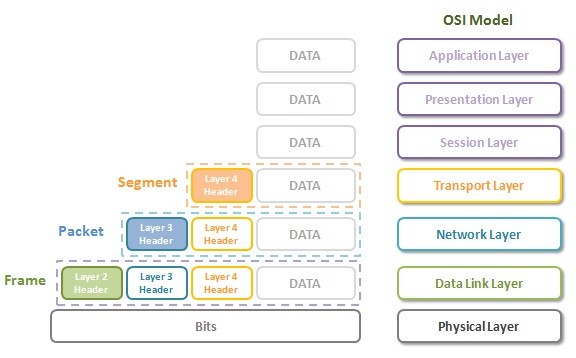
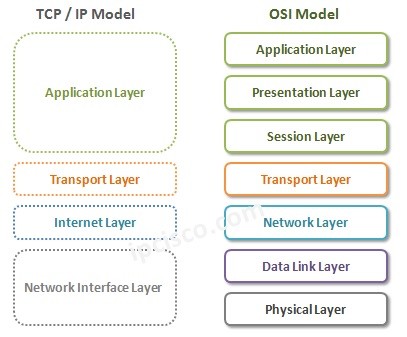
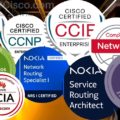

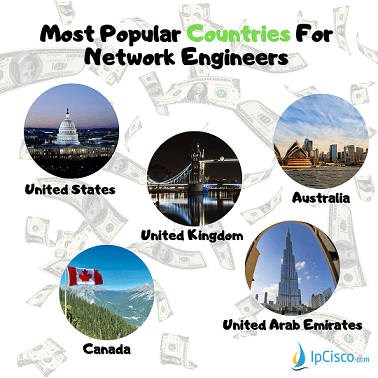

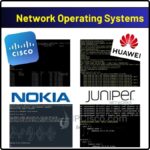
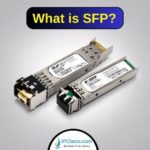


Leave a Reply